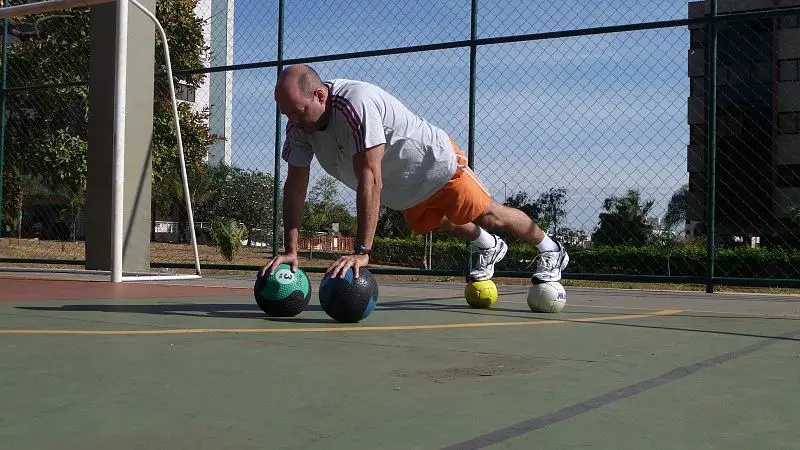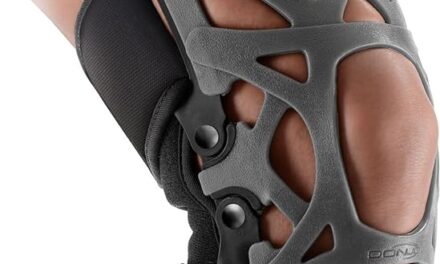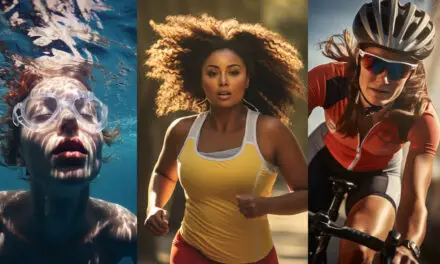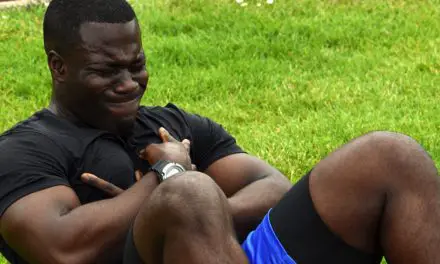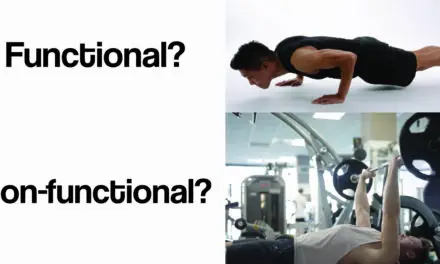Spraining your ankle may bring frustration and anxiety since it limits your ability to move and participate and perform daily activities and sports. Pain and stiffness often accompany the sprain like an itch on a scab. Balance training is one method physical therapists and personal trainers use to reduce the risk of such an injury from occurring, but what does current scientific evidence say about its effectiveness?
Background
Proprioception is one factor that influences how well you balance and your reaction to changes in direction (e.g. cutting and turning) and surface stability (e.g. wet turf). Nearly all sports on land require various degrees of ankle stability and proprioception. If they are compromised, then athletes may likely increase their chances of having an ankle sprain or other types of similar injuries.
In a recent literature review published in World Journal of Orthopedics, ankle sprains are the most common ankle and foot injuries in the United States, and the lateral ligaments of the ankles are the most vulnerable to injuries. Lateral ankle sprains top as the most common type of ankle injury (about 83%). The ankle is most vulnerable to injury when the foot is in plantarflexion and inversion. (3)
Staying in balance is truly a “balancing” act. The nervous system and muscles must control both reflexive and voluntary muscular responses. Dr. You-Jou Hung from the Department of Physical Therapy of Angelo State University in San Angelo, Texas, stated in the review:
“For reflex responses, sudden muscle length changes and the speed of changes would be detected by the muscle spindles of those stretched muscles (e.g., peroneal muscles) during a sudden ankle inversion perturbation. A short latency/loop response (spinal reflex) would be elicited with a result of muscle activation at the stretched muscle. Meanwhile, information from the muscle spindles would also travel up to the supraspinal center, processed, and then the action potential would travel back to the stretched muscles (e.g., peroneal muscles, tibialis anterior) to elicit a long latency response.
“The short latency response is typically fast enough but not powerful enough to correct a fast and large perturbation.”
So imagine a soccer player who is meandering through other players toward the goal, cutting left and right while trying to keep the ball away from his opponents. Or imagine Brazilian samba dancers moving their feet, hips, torso, and upper limbs in sync with the music and choreography. The nervous system has to make split-second decisions to move the ankles and feet in different directions while in coordination with the rest of the body. If movement coordination and timing are off, they may increase the risk of an ankle sprain.
Does Balance Training Help?
While there may be some benefits to ACL injury prevention and improve balance for patients with osteoarthritis and stroke, ankle stability and proprioception improvement are another story.
Hung states, “After decades of research, there is still no consensus on the most effect intervention to reduce the incidents of initial and recurrent ankle sprains.” (3) Despite numerous studies that reported positive therapeutic effects of balance training, the “Clinical Practice Guidelines” published in the Journal of Orthopaedic and Sports Physical Therapy says that interventions in progressive loading/sensorimotor training phase for both therapeutic and sports-related activities are based on “weak evidence.” (4) Among female volleyball players, proprioceptive training (standing on wobble boards for 30 minutes per day for a whole season) is just as effective as technical training (take off and landing for one man or two man blocks). (5)
A Cochrane review found that proprioceptive or neuromuscular training had short-term benefits, but the long-term effects are not known, based on four studies. Given the high risk of bias from “various defects such as lack of blinding, selective reporting, incomplete outcome data together with problems with external validity resulted in a GRADE assessment of ‘poor’.” (6)
Hold On, There’s More!
While ankle proprioception may not be affected much by balance/neuromuscular training, the body is still able to maintain postural control and equilibrium by other means. Researchers from HU University of Applied Sciences Utrecht in Bolognalaan, Netherlands, found the triceps surae vibration on the center of pressure is smaller when subjects stand on a foam pad over a force plate than on a solid surface. However, the paraspinal muscles has higher vibration on the same unstable surface than on a solid surface. (1)
They postulated that proprioception becomes unreliable in the ankles and the central nervous system demands more information from other body parts and reduces weighing information sources that are inconsistent with other sources of sensory input.
“Muscle spindle output is determined by muscle length and changes in muscle length. In standing on a solid surface a pendular movement of the body leads to a change in ankle joint angle and, as a consequence of this, to a change in muscle length of the muscles surrounding the ankle. When standing on foam or wobble board, a change in ankle joint angle and muscle length may occur without any change in body orientation and vice versa. Therefore, signals from muscle spindles do no longer reflect the orientation of the body relative to the gravitational field and it can be expected that the central nervous system reduces weighing of sources of proprioceptive signals that are inconsistent with other sources of sensory information.” (1)
A second postulate made is the hip’s proprioception are used instead of the ankles’. This is similar to a study perform by another Dutch researcher who observed subjects using their hips to maintain balance while standing on a narrow ridge. (2)
The Take Away?
As Dr. Hung had mentioned, decades of studies find contradictions that baffle many physical therapists, sports coaches, and trainers. Debates on social media pit those who argue that balance training can or cannot help improve performance or prevent ankle injuries. So why so many contradictions?
“There are many factors in my opinion. I think the outcome measure method researchers used to examine the treatment effect plays a big role in it,” Hung explained in an online interview with Massage & Fitness Magazine. “For example, single-leg standing with or without vision is a common training method, and it is also a common testing method. Results would show great improvement after the training in that case.
“In fact, we can see significant improvement in balance control after only two to three consecutive trials within minutes. But those short-term motor learning effect may not be able to translate to other tests (or more importantly, to have a long-lasting effect). My students and I just finished data collection on an ankle project. After four weeks of strength or balance training, we found no difference on the balance performance on either group using a totally different testing protocol with the Biodex machine.
“Other than that, as you know, there are hundreds of ankle studies during the past few decades. However, well-designed, controlled, and executed studies are not that many. It is sad that clinicians — physical therapists included — have been using terms such as ‘proprioception training’ for a long time. However, we don’t even know for sure if there is a proprioception deficits in unstable ankles. That should give you some idea about how confusing the situation is.”
Based on the current evidence in foot position and ankle sprains, Hung suggests that it may be better to train athletes to land in a more dorsiflexed and everted ankle position to provide better ankle stability. “Although ankle strength and balance training will not solve the problem, but it does make the joint more stable to a certain degree,” Hung remarked. “We will take all the help we can get.”
References
1. Kiers H, Brumagne S, van Dieën J, van der Wees P, Vanhees L. Ankle proprioception is not targeted by exercises on an unstable surface. European Journal of Applied Physiology. 2012 Apr;112(4):1577-85. doi: 10.1007/s00421-011-2124-8.
2. Otten E. Balancing on a narrow ridge: biomechanics and control. Philosophical Transactions B. The Royal Society Publishing. 1999 May 29; 354(1385): 869–875.
3. Hung YJ. Neuromuscular control and rehabilitation of the unstable ankle. World Journal of Orthopedics. 2015 Jun 18; 6(5): 434–438.
4. Martin RL, Davenport TE, Paulseth S, Wukich DK, Godges JJ; Orthopaedic Section American Physical Therapy Association. Ankle stability and movement coordination impairments: ankle ligament sprains. Journal of Orthopaedic and Sports Physical Therapy. 2013 Sep;43(9):A1-40. doi: 10.2519/jospt.2013.0305.
5. Stasinopoulos D. Comparison of three preventive methods in order to reduce the incidence of ankle inversion sprains among female volleyball players. British Journal of Sports Medicine. 2004 Apr; 38(2): 182–185.
6. de Vries JS, Krips R, Sierevelt IN, Blankevoort L, van Dijk CN. Interventions for treating chronic ankle instability. Cochrane Database of Systematic Reviews. 2011 Aug 10;(8):CD004124. doi: 10.1002/14651858.CD004124.pub3.
A native of San Diego for nearly 40 years, Nick Ng is an editor of Massage & Fitness Magazine, an online publication for manual therapists and the public who want to explore the science behind touch, pain, and exercise, and how to apply that in their hands-on practice or daily lives.
An alumni from San Diego State University with a B.A. in Graphic Communications, Nick also completed his massage therapy training at International Professional School of Bodywork in San Diego in 2014.
When he is not writing or reading, you would likely find him weightlifting at the gym, salsa dancing, or exploring new areas to walk and eat around Southern California.

